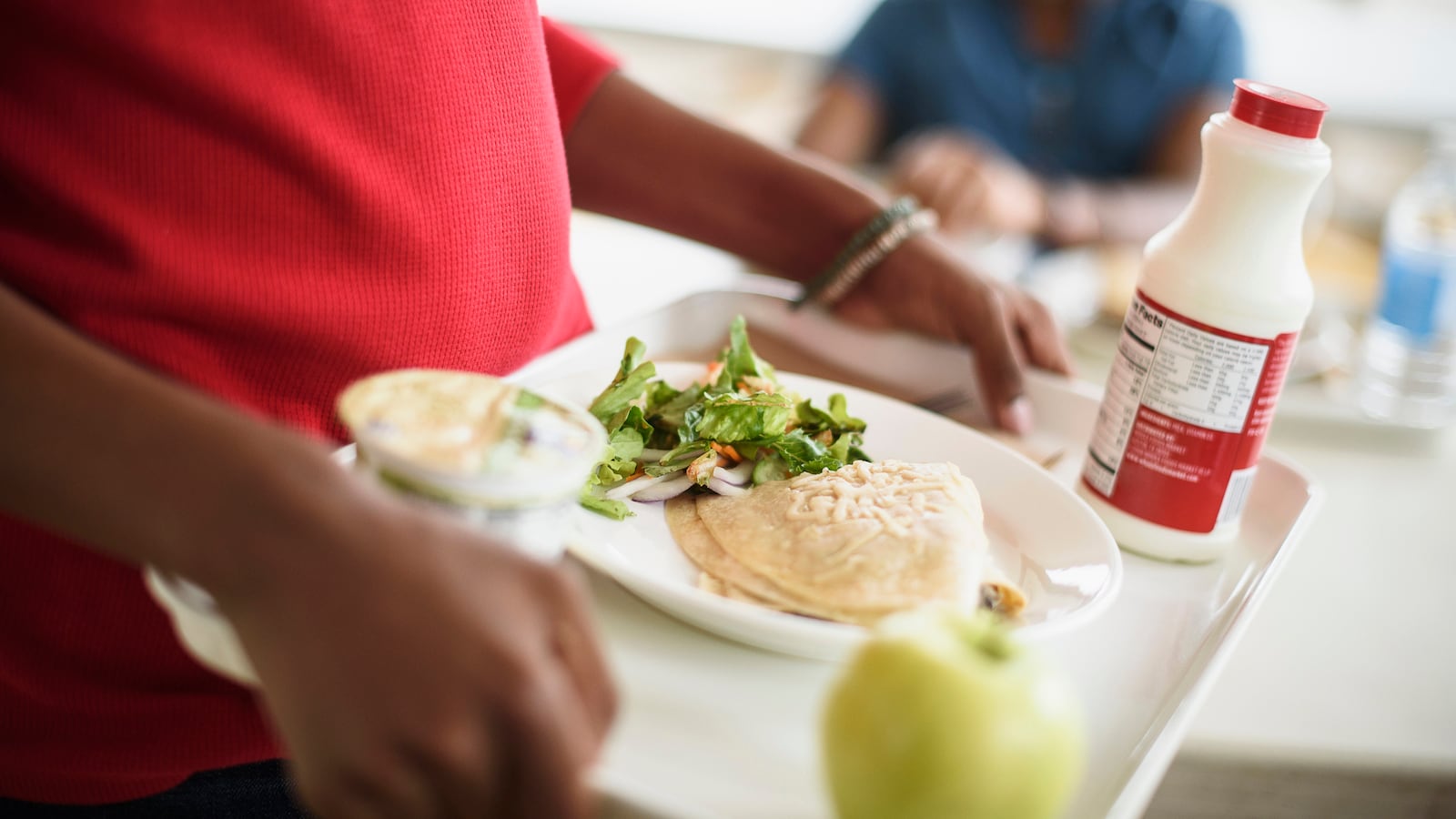A year after Colorado’s largest school district instituted a policy guaranteeing all students a school lunch whether or not they have the money to pay, Denver district officials are planning new measures to prevent the unexpected debt that accrued last year.
Those efforts include ensuring that parents fill out applications for free and reduced-price meals at the start of the year, clarifying how schools should communicate with families about unpaid debt, and establishing new rules for charter schools that participate in the district’s school lunch program.
After the new policy to prevent so-called “lunch shaming” took effect last August, debt from unpaid lunches soared to $356,000, up from $13,000 the year before. It’s just a fraction of the district’s $44 million food service budget, but the amount caught administrators by surprise and figured into their mid-year decision to add snacks students pay for, such as Doritos and Rice Krispies Treats, to elementary school cafeterias to recoup some of the loss.
Denver Public Schools Chief Operating Officer David Suppes said more than one-third of the total debt last year came from charter schools that contract with the district to get school meals for their students.
Omar D. Blair Charter School had the highest lunch debt among Denver schools last year at $11,500.
Suppes also noted that the jump in lunch debt from 2016-17 to 2017-18 may not have been as large as it seemed. That’s because before the lunch-shaming policy, many district schools maintained separate accounts to cover meal costs for students who couldn’t pay. While the district didn’t track the total meal costs covered by those special accounts, it would have pushed the total debt above the $13,000 that was left districtwide at the end of the 2016-17 year.
After the lunch-shaming policy took effect, most schools eliminated their separate accounts to cover unpaid lunches, sending more meal debt to be covered at the district level than in years past.
“Clearly there was growth, probably significant growth in unpaid debt, but it’s hard to tell how much” since all the separate school-based accounts that had paid it before didn’t exist anymore, said Suppes.
Nearly one-third of the district’s lunch debt last year came from families who were eligible for free or reduced-price meals, but signed up part-way into the school year, after their children had already received free school lunches. The federal government covers lunch costs for students eligible for free lunches and part of the cost for students who qualify for reduced-price lunches. For elementary school students in Colorado (and starting this year for middle-schoolers), the state covers the remaining cost of reduced-price lunches.
Another 68 percent of Denver families with unpaid meal debt don’t qualify for free or reduced-price meals. Still, district officials said it’s impossible to determine how many of those families would qualify for subsidized lunches if they applied, how many struggle financially but just miss the cut-off for eligibility, and how many can afford to pay for school lunches but choose not to.
Of the $356,000 in lunch debt from last year, district officials paid off $100,000 with a grant. Suppes said the remaining $256,000 will likely be paid with money from the district’s general fund and from part of its food service budget not associated with the federally subsidized National School Lunch Program.
Suppes said the district is clarifying rules governing who is responsible for covering the cost of unpaid lunches — and may adjust the fees it charges charters that participate in its meal program.
“Nobody’s blaming anybody,” he said, but prior to the lunch-shaming policy, schools operated differently.

